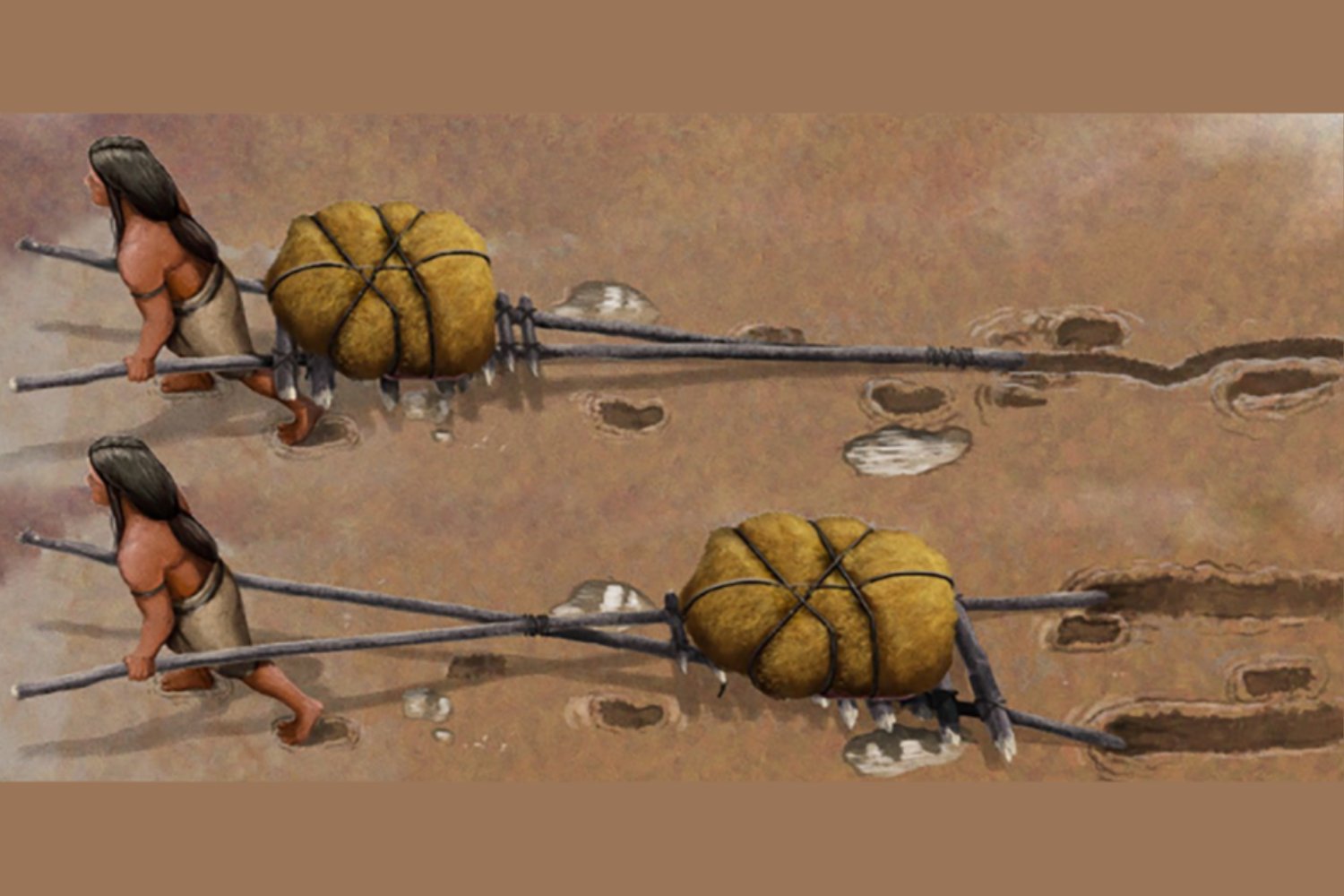
Ancient Footprints and Drag Marks Reveal Early Transportation Technology in the Americas
A groundbreaking study of 23,000-year-old human footprints discovered in White Sands National Park, New Mexico, has unearthed compelling evidence suggesting that Paleoindians, the earliest inhabitants of the Americas, possessed and utilized rudimentary transportation technology far earlier than previously imagined. These findings, published in the journal Quaternary Science Advances, not only reinforce the notion that humans migrated to the Americas thousands of years earlier than traditionally believed but also provide a fascinating glimpse into the ingenuity and resourcefulness of these early pioneers.
The discovery of the footprints in 2021 was already a major revelation, pushing back the timeline of human presence in the Americas considerably. However, the latest research takes this discovery a step further. Alongside the footprints, researchers identified distinctive drag marks etched into the ancient landscape, suggesting the presence of simple vehicles pulled by humans. These marks, the researchers argue, represent some of the earliest known evidence of transportation technology.
The prevailing theory regarding the peopling of the Americas posits that early humans migrated from Siberia to Alaska via the Bering Land Bridge, a now-submerged landmass that connected the two continents during the last Ice Age. While the exact timing of this migration remains a subject of debate among archaeologists, with some arguing for an arrival around 15,000 years ago, increasing evidence points to a much earlier presence, potentially as early as 30,000 years ago.
Regardless of the precise timeline, it’s clear that these early migrants faced significant challenges in navigating vast and unfamiliar landscapes. They would have needed to transport essential resources, including food, water, tools, and shelter materials, across long distances. While direct evidence of early transportation methods has been scarce, the discovery of these drag marks provides a crucial piece of the puzzle.
According to Matthew Bennett, the lead author of the study and an environmental and geographical scientist at Bournemouth University, "We know that our earliest ancestors must have used some form of transport to carry their possessions as they migrated around the world, but evidence in the form of wooden vehicles has rotted away. These drag-marks give us the first indication of how they moved heavy and bulky loads around before wheeled vehicles existed."
The researchers identified two distinct types of track patterns: single-lined and double-lined. They hypothesize that these patterns correspond to two different vehicle designs. The single-lined tracks were likely created by a V-shaped structure, formed by two poles tied together at one end, while the double-lined tracks suggest an X-shaped structure created by two poles spread apart. These structures are reminiscent of travois, a type of drag sled traditionally used by Indigenous peoples for transportation.
The positioning of the footprints in relation to the drag marks strongly suggests that the vehicles were pulled by humans. Furthermore, the presence of smaller footprints, potentially belonging to children, paints a vivid picture of family groups traveling together, with adults hauling the vehicles while children followed alongside. This scenario evokes a sense of a prehistoric road trip, with families traversing the landscape in search of resources and new territories.
Bennett draws a relatable analogy to modern life, stating, "Many people will be familiar with pushing a shopping trolley around a supermarket, moving from location to location with children hanging on. This appears to be the ancient equivalent, but without wheels."
To validate their interpretation of the fossilized tracks, the researchers conducted a series of experiments. They constructed their own travois and, with the help of children, dragged them along the coasts of Dorset in the U.K. and Maine in the U.S. The resulting tracks and footprints closely resembled the fossilized examples found in White Sands National Park, providing further support for their hypothesis.
"Our footprints and lines in the mud from the poles had the same appearance as the fossilised examples that we found in New Mexico," Bennett confirmed.
If the researchers’ interpretation proves correct, these tracks represent some of the earliest known evidence of transportation technology in the world, offering invaluable insights into the ingenuity and adaptability of early humans.
Sally Reynolds, a paleontologist from Bournemouth University and co-author of the study, emphasizes the significance of these findings, stating, "Every discovery that we uncover in White Sands adds to our understanding of the lives of the first people to settle in the Americas."
The discovery of these ancient footprints and drag marks not only sheds light on the technological capabilities of Paleoindians but also provides a glimpse into their social structures and daily lives. The image of families traveling together, pulling rudimentary vehicles across the landscape, underscores the importance of cooperation and resourcefulness in the face of environmental challenges.
Furthermore, this discovery serves as a reminder that the history of human innovation and migration is constantly being rewritten as new evidence comes to light. The story of the peopling of the Americas is far more complex and nuanced than previously understood, and ongoing research in locations like White Sands National Park continues to challenge and refine our understanding of this pivotal chapter in human history.
Ultimately, the discovery of these ancient footprints and drag marks highlights the enduring human spirit of exploration, adaptation, and innovation, demonstrating that even in the absence of advanced technology, our ancestors were capable of overcoming significant obstacles and shaping the world around them. Their legacy continues to resonate today, reminding us of the deep roots of human presence in the Americas and the ongoing process of discovery that shapes our understanding of the past. As Reynolds aptly stated, their discovery sheds light on the earliest immigrants to a region that, tens of thousands of years later, is still a nation of immigrants.
